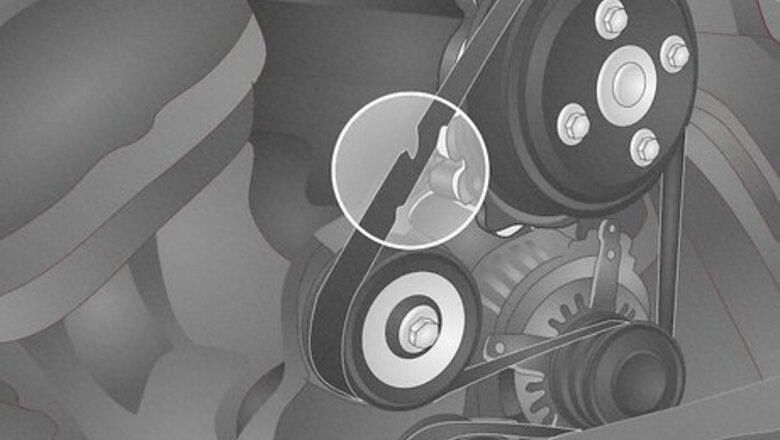
views
Squeaking or squealing: Bad engine belt
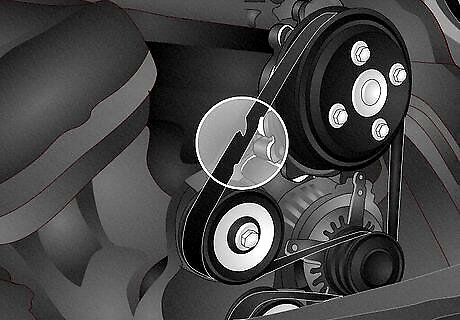
The serpentine belt on your engine helps the other components in your vehicle run smoothly, but over time, it gets worn or damaged. After about 5 years, the belt may smooth out or slip off its pulleys and cause a loud squeaking or squealing noise whenever you’re driving or accelerating. If you hear this sound coming from under your vehicle’s hood, then a faulty belt may be to blame. Other symptoms: Frays or cracks in the belt, poor engine performance, or overheating The fix: Look under the hood and visually inspect the belts on your engine. Replace the belt if it looks damaged or have a mechanic replace it for you. Is it safe to drive? Driving with a bad belt can potentially damage other parts, so only drive it if you’re taking it in for repairs. If the belts on your engine look fine, then the squeaking may be coming from the pulleys holding the belt in place. Take your vehicle to a mechanic to have them inspected.
Thumping or slapping: Tire issues

If you notice a rhythmic thumping coming from under your vehicle that gets louder when you accelerate, then the issue may be with one of your tires. It could potentially mean that there’s a torn rubber on the treads, an air bubble in the tire’s sidewall, or even a flat. Other symptoms: Vibrations while driving and/or uneven wear, cracking, or bulges on the tire(s) The fix: Change the tire that’s damaged and replace it with a new one. Is it safe to drive? Try to drive as little as possible and have your tires inspected immediately to prevent them from blowing out.
Ticking or clicking: Low oil levels
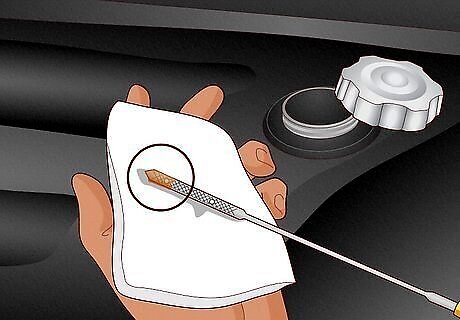
Motor oil is important for lubricating the moving parts in your engine. When your levels get low, they don’t lubricate the valves and metal pieces properly and they may make a rhythmic ticking or clicking sound as you accelerate. Other symptoms: Lit “Check Engine” light, sluggish engine, and burning smells The fix: Check the oil level in your vehicle. Locate where the oil dipstick is located in your vehicle’s manual, then feed the dipstick into the oil compartment and pull it out to check the level. If the level is below the bottom mark on the dipstick, add more motor oil or perform an oil change. Is it safe to drive? You should avoid driving if you have low oil levels because you could cause damage to your engine that requires more costly repairs. If you notice oil on the ground under your vehicle, then you may have a leak somewhere in your oil line. Take your vehicle to a mechanic and have the leak repaired before putting more oil in your vehicle.
Rattling or pinging: Wrong gasoline octane

If there’s a light pinging that sounds a little like marbles bouncing around in your engine when you accelerate, your vehicle may not be burning gasoline efficiently. Fuel with a higher octane rating is more stable and may be required for high-performance engines. If you accidentally used a lower octane, it may cause the fuel to burn faster. Other symptoms: Engine misfires and reduced fuel efficiency The fix: If the temperature gauge has a normal reading, try filling up with premium gasoline. If that doesn’t work or if the temperature gauge runs hot, take your vehicle to a mechanic. Is it safe to drive? Light pinging is fine to drive with. If the pinging is severe or loud, then stop driving and see a mechanic.
Whistling: Vacuum or hose issue

When air escapes from a vacuum or hose on your vehicle, it can create a low- or high-pitched whistling sound when you speed up or idle. Hoses can crack and get damaged over time, so you may notice the issue more frequently on older vehicles. Other symptoms: Engine performance issues, high RPMS, and "Check Engine" light The fix: Inspect your vacuum hoses for damage and replace any that are worn out or broken. If you’re unable to locate the damaged hose or vacuum piece, then see a mechanic to check if the sound is caused by other issues, like a bad oil separator or worn differential. Is it safe to drive? Vacuum and hose issues don’t need immediate repair, but your vehicle may not run as efficiently until you get it fixed.
Roaring or humming: Loose wheel bearings
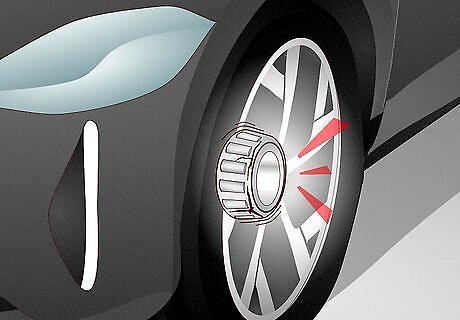
When bearings get broken or loose, they spin inside the wheel and create a loud humming or whirring noise like gusts of wind. As you accelerate, the bearings spin faster and get even louder. Other symptoms: Loud noises while turning, lit ABS brake light, vibrations while driving, and wobbling wheels The fix: Wheel bearings are difficult to repair or replace on your own, so get quotes from mechanics to see how much repairs cost. Is it safe to drive? While you can drive short distances with bad bearings, get them fixed as soon as you’re able to prevent lasting damage.
Groaning: Worn brake pads or backing plate

As you use your brakes more, the pads that help stop your vehicle wear away and create a metal-on-metal grinding or groaning sound. Even when you aren’t stepping on your brakes, the pieces may groan or grind together while you drive. Alternatively, if something gets lodged between your brakes and the backing plates behind them, they may make a consistent rattle or groan as you accelerate. Other symptoms: Increased stopping distance, spongy brake pedal, and vibrations while braking The fix: Remove the backing plate from behind your brakes to clear out any debris stuck there. Change the brake pads in your vehicle or hire a mechanic to do it for you if they look worn down. Is it safe to drive? It’s okay to drive with debris stuck behind the backing plate, but it can be unsafe if you have worn or faulty brake pads.
Knocking: Engine or fuel issue

When you hear a knocking sound coming from the engine bay, then there’s usually an internal issue with part of your engine. It could be as simple as a faulty spark plug that needs replacing, or it could be bad sensors installed in your engine. Typically, the knocking will happen as you start your vehicle, speed up, or come to an idle. Other symptoms: Reduced gas mileage, engine misfires, lit "Check Engine" light, and sluggish engine performance The fix: Use an OBD code reader to diagnose your engine’s issue and determine the faulty part. Replace or repair the part if you’re able to, or let a mechanic know the issue you’re dealing with. Is it safe to drive? Driving may cause lasting damage to your engine and prevent it from working properly, so stay off the road unless you’re taking it in for repairs.
Rumbling: Exhaust issues
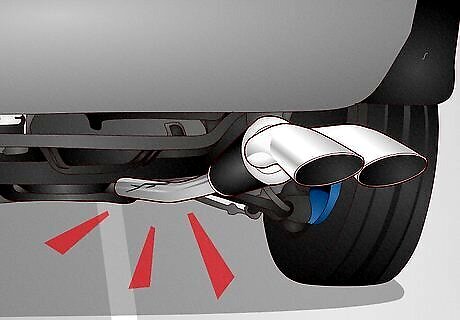
Your vehicle’s exhaust system runs underneath your vehicle, and any leaking emissions can cause a loud rhythmic rumbling as you drive down the road or accelerate. Rust may have formed somewhere along the line and created a hole, or one of the connections may have come loose. Other symptoms: Rotten egg smell, reduced fuel efficiency, and visible exhaust smoke The fix: Locate the exhaust leak by running your vehicle and spraying the exhaust line with soapy water—you'll see bubbles forming over the leak. Patch and fix the exhaust pipe or have a mechanic repair it for you. Is it safe to drive? While it’s safe to drive your vehicle with leaky exhaust, it may not use fuel as efficiently. However, it may be illegal in your area if your vehicle leaks raw emissions, so it’s best to stay off the road.
Grinding: Worn clutch

If your car makes a loud noise as you accelerate and shift through the gears, then it’s a good sign that the clutch has worn out. It may also signify that there’s a deeper problem in your transmission that controls your vehicle. Other symptoms: Jerking, shaking, burning smell, and difficulty changing gears The fix: Have the clutch repaired or replaced by a pro. Take your vehicle to a mechanic because clutch repairs can be difficult for a DIYer. Is it safe to drive? It’s best not to drive with a worn clutch because it may prevent your vehicle from operating properly and could damage the engine over time.
Whining: Faulty transmission

When your transmission fluid levels are low or if the part isn’t working properly, then the gears inside work harder than usual and create a loud whining sound. It may also mean that there’s a larger problem with the transmission either from old age or damage. Other symptoms: Burning smell, reduced engine performance, and jerky engine movements The fix: Check the transmission fluid in your vehicle and either top it off or change the fluid completely. If the fluid levels are at their maximum level, take your vehicle to a mechanic because transmission repairs are difficult to do on your own. Is it safe to drive? A faulty transmission can make your engine inoperable and leave you stranded, so avoid driving and have it repaired ASAP.



















Comments
0 comment